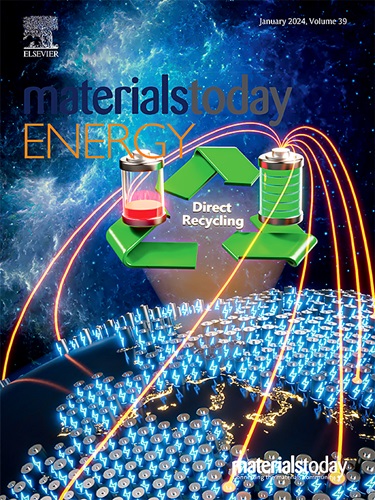MOF 和 MOF 基复合材料的最新进展:合成、性能和应用
IF 8.6
2区 材料科学
Q1 CHEMISTRY, PHYSICAL
引用次数: 0
摘要
金属有机框架(MOFs)是一种纳米结构的多晶材料,其中的金属颗粒或基团通过有机取代基(称为 "支柱 "或 "交联")连接在一起,具有大表面积、高渗透性、可调孔隙率和灵活的性能。了解 MOFs 的相互作用和排列方式,对于高效、精确地开发可持续应用的高性能材料至关重要。近年来,MOFs 作为一种适应性极强的材料,在开发可再生和替代能源的节约和转化技术、解决全球污染和即将到来的燃料问题方面引起了极大的研究兴趣。本文概述了 MOFs 相关材料的合成方法、参数和特性。文章还评估了结构与功能之间的关系,研究了可用于提高光催化活性的因素。通过各种实例对 MOFs 的实际用途进行了分类和研究,为研究人员提供了关于使用 MOFs 的材料中成分相互作用的新观点。最后,本研究全面分析了各种功能的 MOFs 研究的新趋势和尚未解决的挑战。本文章由计算机程序翻译,如有差异,请以英文原文为准。
Recent advance in MOFs and MOF-based composites: synthesis, properties, and applications
Metal-organic frameworks (MOFs) are nanostructured polycrystalline materials where metal particles or groups are connected by an organic substituent, known as a ‘strut’ or ‘crosslinks’ having large surface area, high permeability, adjustable porosity, and flexible performance. Understanding the interactions and arrangement of MOFs is crucial for efficiently and precisely developing high-performance materials for sustainable applications. In recent years, there has been significant research interest in MOFs as a highly adaptable material for developing renewable and alternative energy conservation and transformation technologies, addressing global pollution and the impending fuel issue. This article provides an overview of the synthesis methods, parameters and characteristics of materials related to MOFs. It also assesses the relationship between the structure and functionality, examining factors that can be manipulated to improve their photocatalytic activity. Various examples were used to classify and examine the practical uses of MOFs, providing researchers with a new viewpoint on the compositional interaction in materials using MOFs. Finally, this study comprehensively analyzes the emerging trends and unresolved challenges in MOFs research across various functionalities.
求助全文
通过发布文献求助,成功后即可免费获取论文全文。
去求助
来源期刊

Materials Today Energy
Materials Science-Materials Science (miscellaneous)
CiteScore
15.10
自引率
7.50%
发文量
291
审稿时长
15 days
期刊介绍:
Materials Today Energy is a multi-disciplinary, rapid-publication journal focused on all aspects of materials for energy.
Materials Today Energy provides a forum for the discussion of high quality research that is helping define the inclusive, growing field of energy materials.
Part of the Materials Today family, Materials Today Energy offers authors rigorous peer review, rapid decisions, and high visibility. The editors welcome comprehensive articles, short communications and reviews on both theoretical and experimental work in relation to energy harvesting, conversion, storage and distribution, on topics including but not limited to:
-Solar energy conversion
-Hydrogen generation
-Photocatalysis
-Thermoelectric materials and devices
-Materials for nuclear energy applications
-Materials for Energy Storage
-Environment protection
-Sustainable and green materials
 求助内容:
求助内容: 应助结果提醒方式:
应助结果提醒方式:


